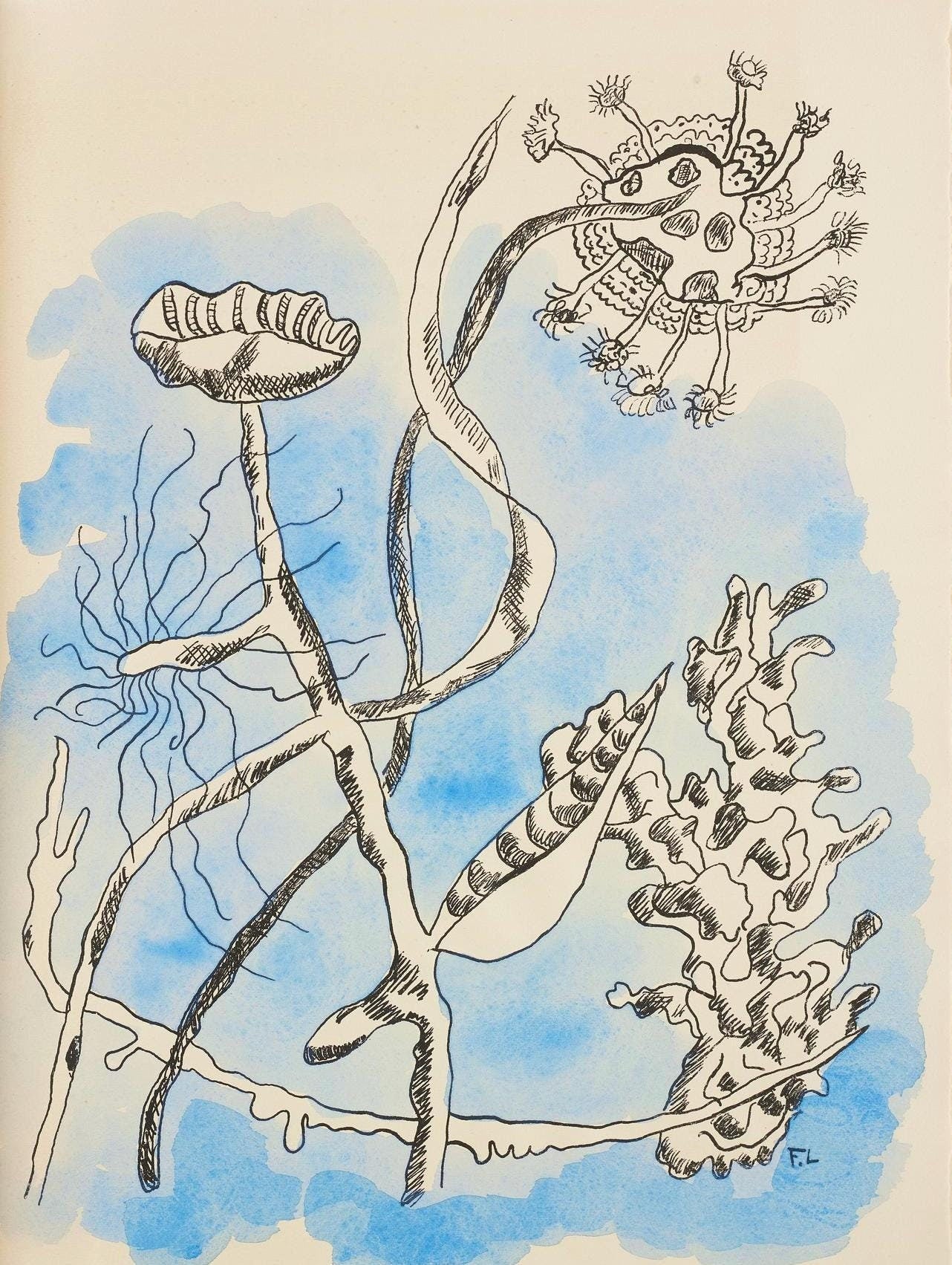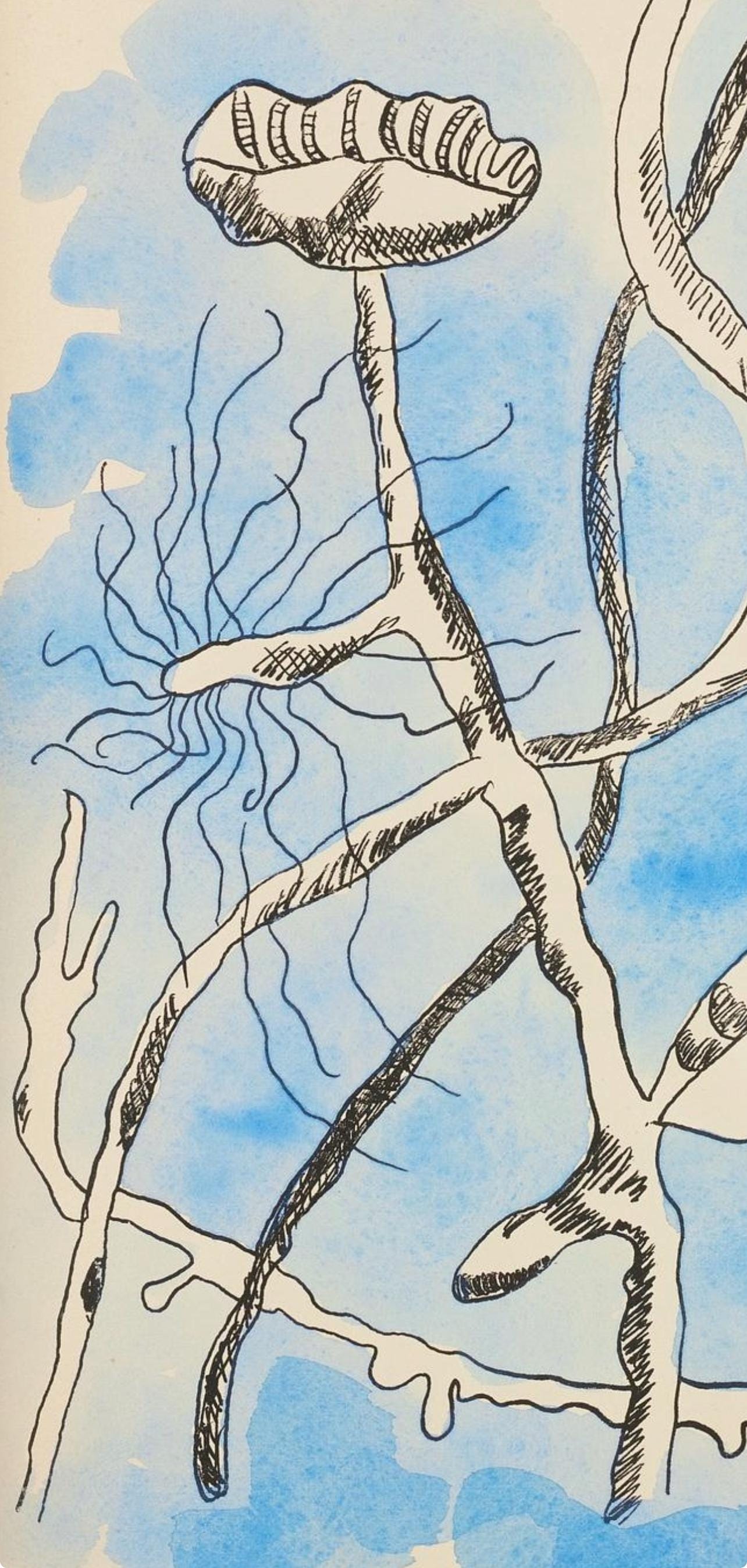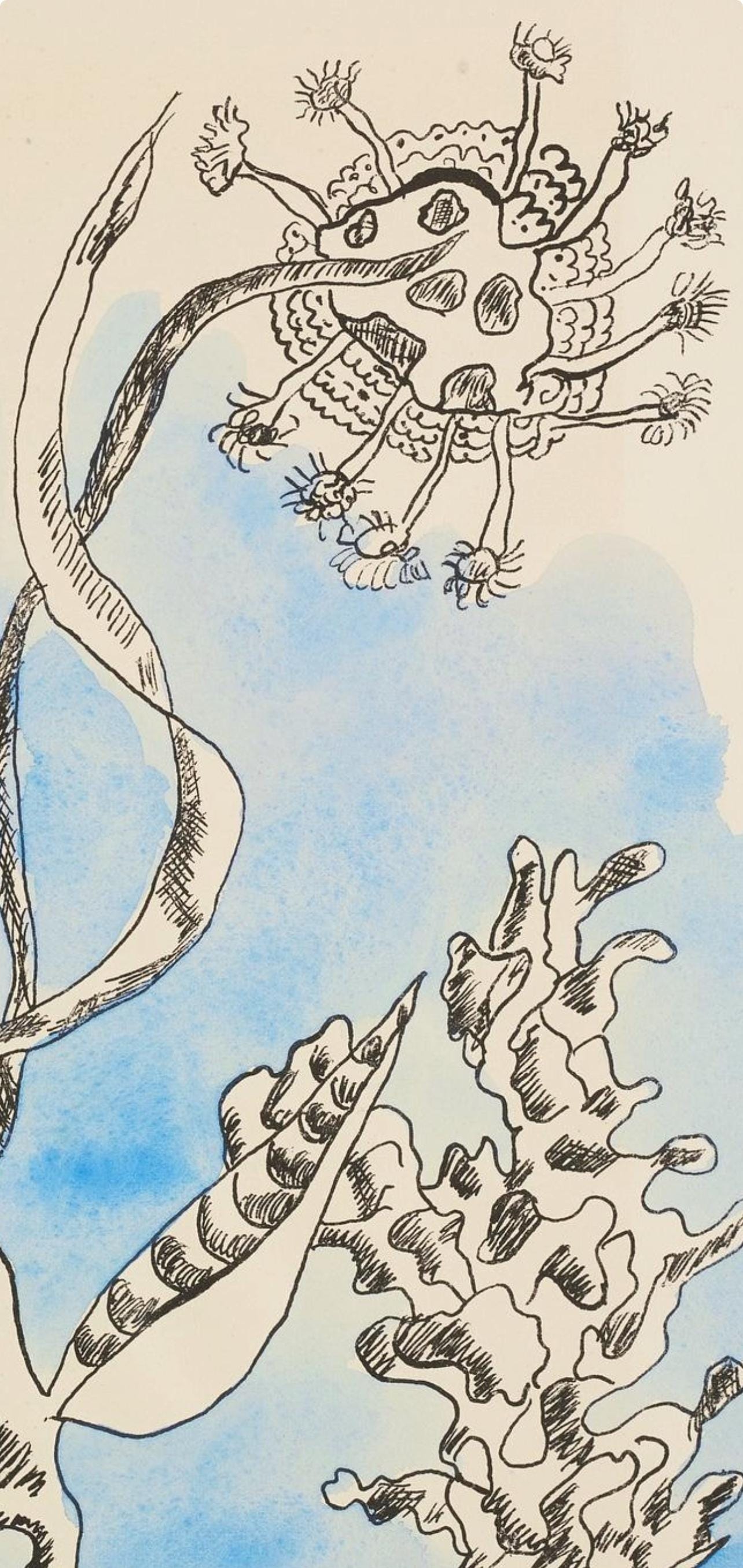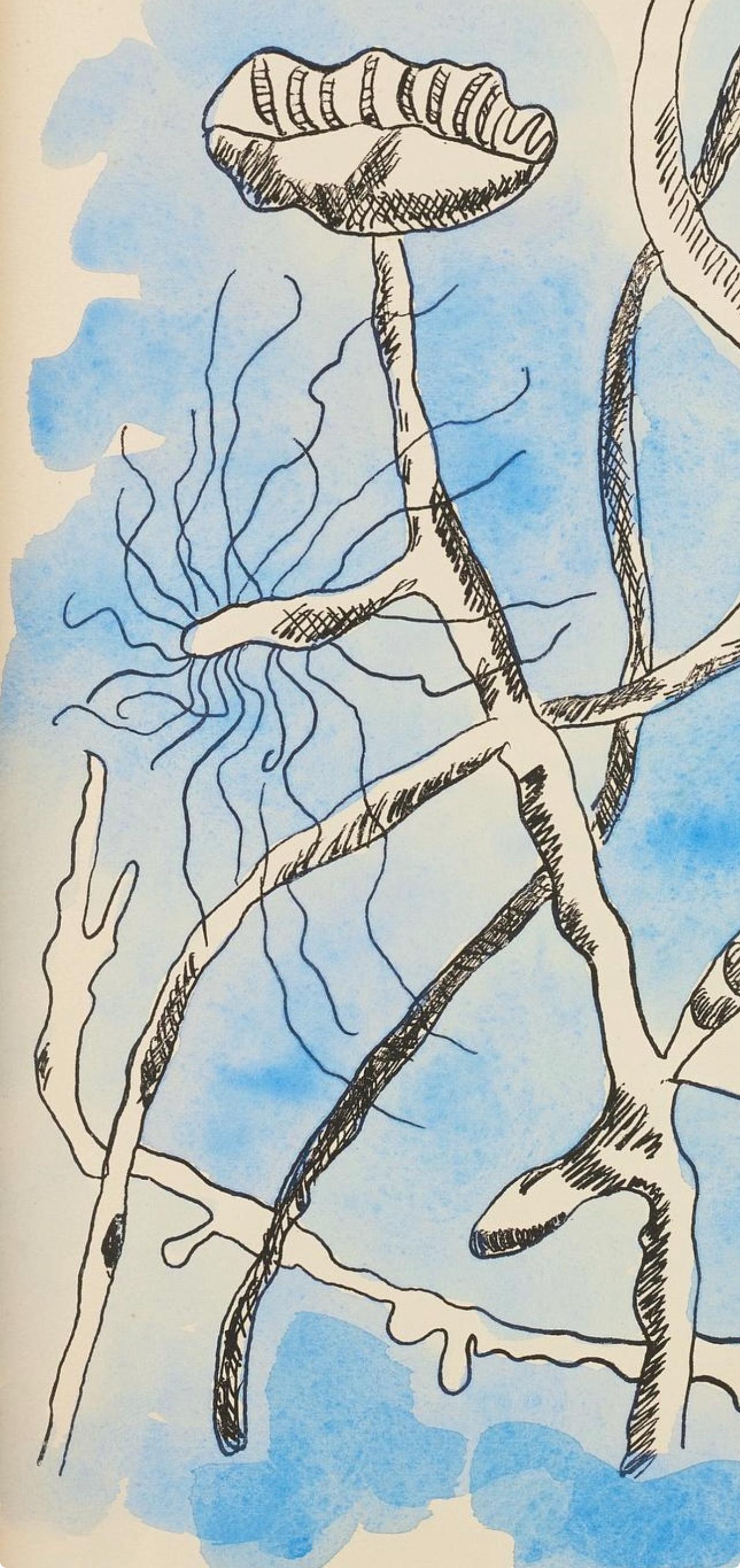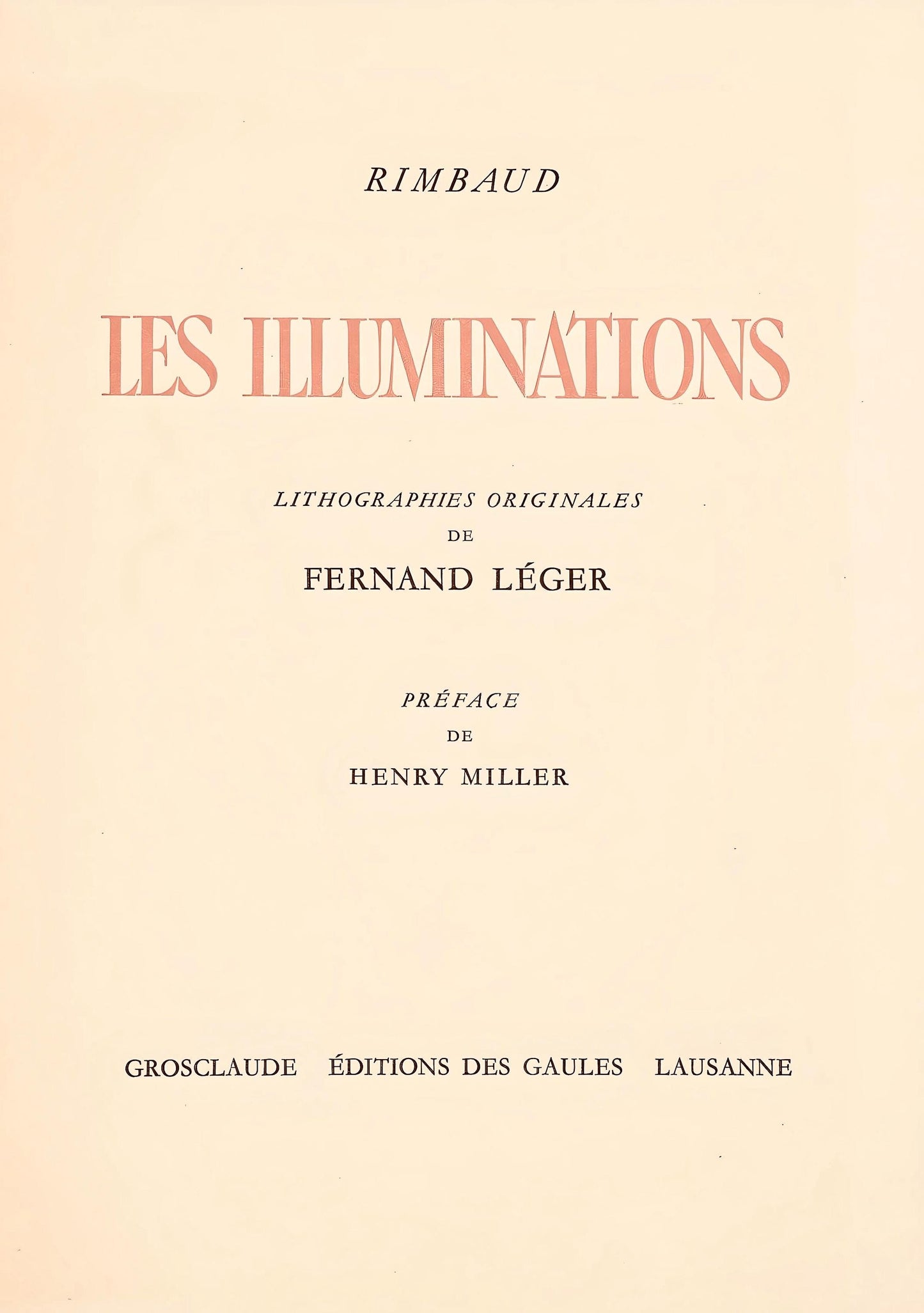1
/
of
7
Auction Ended: July 11, 2025
Post-Auction Sale Ends in:
Fernand Lger, Composition (Saphire 24-38), Les Illuminations, Lithograph
Fernand Lger, Composition (Saphire 24-38), Les Illuminations, Lithograph
Regular price
$4,644.15 USD
Regular price
$6,910.94 USD
Sale price
$4,644.15 USD
Unit price
/
per
Couldn't load pickup availability
Condition: Pre-Owned
Lithograph on papier vlin teint, fait a la main paper. Paper size: 13 x 9.75 inches. Excellent condition. Inscription: Unsigned and unnumbered, as issued. Notes: From the folio, Les Illuminations, 1949. Published by Grosclaude, ditions des Gaules, Lausanne; printed by Roth & Sauter SA, Lausanne. Excerpted from the folio (translated from French), This edition, illuminations, by Arthur Rimbaud is directed by Louis Grosclaude with the collaboration of Irne Andriny who......
Lithograph on papier vlin teint, fait a la main paper. Paper size: 13 x 9.75 inches. Excellent condition. Inscription: Unsigned and unnumbered, as issued. Notes: From the folio, Les Illuminations, 1949. Published by Grosclaude, ditions des Gaules, Lausanne; printed by Roth & Sauter SA, Lausanne. Excerpted from the folio (translated from French), This edition, illuminations, by Arthur Rimbaud is directed by Louis Grosclaude with the collaboration of Irne Andriny who......
Condition: Pre-Owned
Lithograph on papier vlin teint, fait a la main paper. Paper size: 13 x 9.75 inches. Excellent condition. Inscription: Unsigned and unnumbered, as issued. Notes: From the folio, Les Illuminations, 1949. Published by Grosclaude, ditions des Gaules, Lausanne; printed by Roth & Sauter SA, Lausanne. Excerpted from the folio (translated from French), This edition, illuminations, by Arthur Rimbaud is directed by Louis Grosclaude with the collaboration of Irne Andriny who was the publisher's precious inspirer for seven years. The central printing office in Lausanne, directed by Arthur Margot, Hans Brand collaborator, composed the text by hand. The original lithographies of Fernand Lger are stone-drawn by Roth & Sauter, printers in Lausanne. Papier pur chiffon fait a la main a t fabriqu made especially for this edition by the papeteries de Lana in Docelles. The text is composed in Garamond according to Cluny's edition. The lithographies are colored with a stencil under the direction of Louis Grosclaude. Completed printing on July 14, One Thousand Nine Hundred and Forty-Nine. The print run is limited to 395 examples: 25 examples on papier vlin teint, with a series of Fernand Lger's lithographies on papier de Chine, and the artist's original gouache, numbered from I to 25; 75 examples on papier velin teinte, lourd, with a sequence of lithographies on Chine, numbered from 26 to 100; 275 examples on papier vlin teint, fait a la main, numbered from 101 to 375; 20 examples are intended for employees, they are numbered from I to XX.
FERNAND LEGER (1881-1955) was a French painter, sculptor, and filmmaker. In his early works he created a personal form of cubism (known as "tubism") which he gradually modified into a more figurative, populist style. His boldly simplified treatment of modern subject matter has caused him to be regarded as a forerunner of pop art. Lger was born in Argentan, Orne, Lower Normandy, where his father raised cattle. Fernand Lger initially trained as an architect from 1897 to 1899, before moving in 1900 to Paris, where he supported himself as an architectural draftsman. After military service in Versailles, Yvelines, in 19021903, he enrolled at the School of Decorative Arts after his application to the cole des Beaux-Arts was rejected. He nevertheless attended the Beaux-Arts as a non-enrolled student, spending what he described as "three empty and useless years" studying with Grme and others, while also studying at the Acadmie Julian. He began to work seriously as a painter only at the age of 25. At this point his work showed the influence of impressionism, as seen in Le Jardin de ma mre (My Mother's Garden) of 1905, one of the few paintings from this period that he did not later destroy. A new emphasis on drawing and geometry appeared in Lger's work after he saw the Czanne retrospective at the Salon d'Automne in 1907. In 1909, he moved to Montparnasse and met Alexander Archipenko, Jacques Lipchitz, Marc Chagall, Joseph Csaky and Robert Delaunay. In 1910, he exhibited at the Salon d'Automne in the same room (salle VIII) as Jean Metzinger and Henri Le Fauconnier. In his major painting of this period, Nudes in the Forest, Lger displays a personal form of Cubism that his critics termed "Tubism" for its emphasis on cylindrical forms. In 1911, the hanging committee of the Salon des Indpendants placed together the painters identified as 'Cubists'. Metzinger, Albert Gleizes, Le Fauconnier, Delaunay and Lger were responsible for revealing Cubism to the general public for the first time as an organized group. The following year he again exhibited at the Salon d'Automne and Indpendants with the Cubists, and joined with several artists, including Le Fauconnier, Metzinger, Gleizes, Francis Picabia and the Duchamp brothers, Jacques Villon, Raymond Duchamp-Villon and Marcel Duchamp to form the Puteaux Groupalso called the Section d'Or (The Golden Section) paintings, from then until 1914, became increasingly abstract. Their tubular, conical, and cubed forms are laconically rendered in rough patches of primary colors plus green, black and white, as seen in the series of paintings with the title Contrasting Forms. Lger made no use of the collage technique pioneered by Braque and Picasso.
Product Disclaimer: Please review the full description and photos. Lithographs may be plate-signed, hand-signed, or slab-signed and can include a COA (see images); edition numbers shown may vary from the one shipped. Pricing reflects signature type—hand-signed pieces carry a premium and are clearly labeled. 'After' or 'nach' indicates an authorised lithographic reproduction in the style of the named artist, not a unique original. For inquiries, please reach out to support@seuyco.com. By registering for or placing a bid in any SEUYCO auction, you confirm that you have read, understood, and agree to our Shipping, Payment, and Auction Policies.
Lithograph on papier vlin teint, fait a la main paper. Paper size: 13 x 9.75 inches. Excellent condition. Inscription: Unsigned and unnumbered, as issued. Notes: From the folio, Les Illuminations, 1949. Published by Grosclaude, ditions des Gaules, Lausanne; printed by Roth & Sauter SA, Lausanne. Excerpted from the folio (translated from French), This edition, illuminations, by Arthur Rimbaud is directed by Louis Grosclaude with the collaboration of Irne Andriny who was the publisher's precious inspirer for seven years. The central printing office in Lausanne, directed by Arthur Margot, Hans Brand collaborator, composed the text by hand. The original lithographies of Fernand Lger are stone-drawn by Roth & Sauter, printers in Lausanne. Papier pur chiffon fait a la main a t fabriqu made especially for this edition by the papeteries de Lana in Docelles. The text is composed in Garamond according to Cluny's edition. The lithographies are colored with a stencil under the direction of Louis Grosclaude. Completed printing on July 14, One Thousand Nine Hundred and Forty-Nine. The print run is limited to 395 examples: 25 examples on papier vlin teint, with a series of Fernand Lger's lithographies on papier de Chine, and the artist's original gouache, numbered from I to 25; 75 examples on papier velin teinte, lourd, with a sequence of lithographies on Chine, numbered from 26 to 100; 275 examples on papier vlin teint, fait a la main, numbered from 101 to 375; 20 examples are intended for employees, they are numbered from I to XX.
FERNAND LEGER (1881-1955) was a French painter, sculptor, and filmmaker. In his early works he created a personal form of cubism (known as "tubism") which he gradually modified into a more figurative, populist style. His boldly simplified treatment of modern subject matter has caused him to be regarded as a forerunner of pop art. Lger was born in Argentan, Orne, Lower Normandy, where his father raised cattle. Fernand Lger initially trained as an architect from 1897 to 1899, before moving in 1900 to Paris, where he supported himself as an architectural draftsman. After military service in Versailles, Yvelines, in 19021903, he enrolled at the School of Decorative Arts after his application to the cole des Beaux-Arts was rejected. He nevertheless attended the Beaux-Arts as a non-enrolled student, spending what he described as "three empty and useless years" studying with Grme and others, while also studying at the Acadmie Julian. He began to work seriously as a painter only at the age of 25. At this point his work showed the influence of impressionism, as seen in Le Jardin de ma mre (My Mother's Garden) of 1905, one of the few paintings from this period that he did not later destroy. A new emphasis on drawing and geometry appeared in Lger's work after he saw the Czanne retrospective at the Salon d'Automne in 1907. In 1909, he moved to Montparnasse and met Alexander Archipenko, Jacques Lipchitz, Marc Chagall, Joseph Csaky and Robert Delaunay. In 1910, he exhibited at the Salon d'Automne in the same room (salle VIII) as Jean Metzinger and Henri Le Fauconnier. In his major painting of this period, Nudes in the Forest, Lger displays a personal form of Cubism that his critics termed "Tubism" for its emphasis on cylindrical forms. In 1911, the hanging committee of the Salon des Indpendants placed together the painters identified as 'Cubists'. Metzinger, Albert Gleizes, Le Fauconnier, Delaunay and Lger were responsible for revealing Cubism to the general public for the first time as an organized group. The following year he again exhibited at the Salon d'Automne and Indpendants with the Cubists, and joined with several artists, including Le Fauconnier, Metzinger, Gleizes, Francis Picabia and the Duchamp brothers, Jacques Villon, Raymond Duchamp-Villon and Marcel Duchamp to form the Puteaux Groupalso called the Section d'Or (The Golden Section) paintings, from then until 1914, became increasingly abstract. Their tubular, conical, and cubed forms are laconically rendered in rough patches of primary colors plus green, black and white, as seen in the series of paintings with the title Contrasting Forms. Lger made no use of the collage technique pioneered by Braque and Picasso.
Product Disclaimer: Please review the full description and photos. Lithographs may be plate-signed, hand-signed, or slab-signed and can include a COA (see images); edition numbers shown may vary from the one shipped. Pricing reflects signature type—hand-signed pieces carry a premium and are clearly labeled. 'After' or 'nach' indicates an authorised lithographic reproduction in the style of the named artist, not a unique original. For inquiries, please reach out to support@seuyco.com. By registering for or placing a bid in any SEUYCO auction, you confirm that you have read, understood, and agree to our Shipping, Payment, and Auction Policies.
+ Read More
